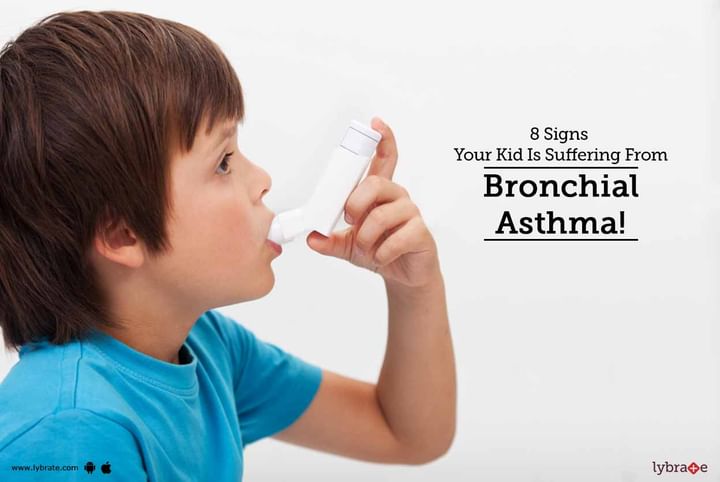8 Signs Your Kid Is Suffering From Bronchial Asthma!
The term asthma and bronchial asthma are often used interchangeably. Bronchial asthma refers to the chronic inflamation of the airways either due to some internal or environmental allergen. This leads to the narrowing of airways, which makes breathing difficult and blocks air from entering the lungs. Children are most affected by this condition as the immune system is still in the process of maturity and often grows out of it as they age. However, if not treated, this can lead to many complications like respiratory failure and can prove to be fatal. Asthma cases often spike in winter months and in the flowering season. It can also be triggered by second hand or passive smoke, stress, sudden unaccustomed physical exercise, food additives, dust, house mites, perfumes, certain drugs and many other allergens. A family history of asthma, allergic rhinitis, atopic dermatitis and other allergic conditions can also increase a child’s risk of suffering from this condition.
Some of the most noticeable symptoms of bronchial asthma include:
1. Wheezing
2. Shortness of breath
3. Excessive coughing that worsens at night
4. Tightness of the chest
5. Lowered energy levels
6. Rapid breathing
7. Tiredness
8. Indrawing of chest and lower neck
These symptoms often worsen after exercising. Lung function test and Chest X-ray are often used to confirm a diagnosis of bronchial asthma. Once diagnosis is being confirmed, it should be categorized as per severity. Your doctor may prescribe medication in the form of pills and inhalants as per the category of disease. It is important to note that these cannot cure asthma, but can help manage it. Inhalers deliver low doses of steroids directly to the lungs to reduce inflammation and other inhaled medication like Beta 2 agonist will open the airway by relaxing the muscles of airway. Children suffering from asthma must be taught how to use the inhalers and should always have it with them. In the case of school going children, their teachers should also be informed about the condition. Parents should also know how to keep it, use it and clean the device in a proper and hygienic way.
In very small kids those inhalational medication can be given by face mask and spacer, but as the age grows or in case of elder children above 6 years of age, they can directly take the medication from spacer. Those children who are already on inhalers, but still face asthma attack , for them nebuliser is the better choice to manage the emergency. It will make the liquid medicine into mist and enters into the air passage easily and work promptly.
In addition, certain lifestyle changes can also help reduce the frequency of asthmatic attacks. Avoid going outdoors on windy days or days when air pollutant level is high. Reduce the child’s exposure to allergens like pet hair, dander and dust by dusting and vacuuming on a weekly basis. Avoid the use of humidifiers inside your house as moist air can promote the infestation of dust mites. Try to keep the child in a room with adequate air and sunlight. Take plenty of green leafy vegetables and fruits, which contain lots of vitamins and minerals. If possible get your child to wear cover his or her nose and mouth while in outdoors.
In case you have a concern or query you can always consult an expert & get answers to your questions!



+1.svg)
